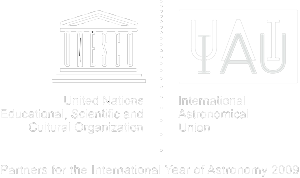Night and day are like two different worlds. In this creative activity for very young children, we introduce the concept of the spinning Earth.
As the World Turns
 Brief Description
Brief Description Materials
Materials- Pencils
- Paperclips
- Scissors
- Two paper plates
- Ruler
 Learning Objectives
Learning Objectives- To introduce children to the motion of the Earth and the idea that we are not living on a static world.
- To explain that the Earth rotations, moving every 12 hours from the shadow into the sunlight and back.
- Teach children to core skill of visual interpretation.
 Background Information
Background InformationThe Earth exhibits two different kinds of motion: it revolves around the Sun in a fixed orbit, a journey that takes exactly 365.26 days to complete (or as we know it, a year), and it rotates around its own axis.
The spinning of the Earth around its own axis causes day and night. It takes 23.93 hours to complete one rotation. The Earth completes one full rotation every 24 hours. This is why the Sun appears to rise in the East and set in the West. This motion creates day and night approximately every 12 hours. The Earth is spherical and at any given time, the half facing the Sun will be shined upon, while the other half will have no light. Places in the former will therefore experience day while places in the latter will experience night. The Earth spins anticlockwise as seen from space with North being up.
The cycle of night and day is continuous, except near the North and South Pole. If the Earth’s axis was perpendicular to its orbital plane, all places on Earth would experience equal amounts of day and night:12 hours of day and 12 hours of night. However, the Earth’s axis is actually tilted at an angle of 23.4°. This means that during the Northern Hemisphere's summer, the North Pole always faces the Sun, so the sun doesn't set here and for several weeks it is continuous daytime. At the same time, the South Pole faces away from the Sun (Southern Hemisphere winter) and is in continuous night.
 Full Activity Description
Full Activity DescriptionStep 1
Draw a line through the centre of one of your paper plates to create two semi-circles. (Image 2)
Step 2
Give each child one of the divided paper plates and ask them all to imagine a scene from daytime and one from night-time. Ask the children to draw or colour-in two scenes on the paper plate; one half representing day and the other representing night. Tell them to include the sky as a backdrop. (Image 3)
Step 3
Discuss in a group and make a list of the differences between the two, e.g. ‘What do we hear at night? What animals do we see? What do we see only in the daytime?’
Step 4
Take the second paper plate and cut out a semi-circle so that only one scene can be seen at a time. Leave a small tab on the horizontal line so that you can fix a paper fastener through the middle of both plates. (Image 4)
Step 5
Pin the plates together with a paper fastener and turn the rear plate to turn day into night. (Image 5)
 Evaluation
EvaluationAfter the activity you can test what the students have learned by asking the following questions:
- If it's night time here, what is happening on the other side of the world?
- What happens every 24 hours?
- Where does the daylight come from?
- Why isn't the Sun in the sky during the night?
- Why do day and night happen?



 Keywords
Keywords Connection to National Curriculum
Connection to National Curriculum Source
Source License
License Attachments
Attachments Downloads
Downloads


